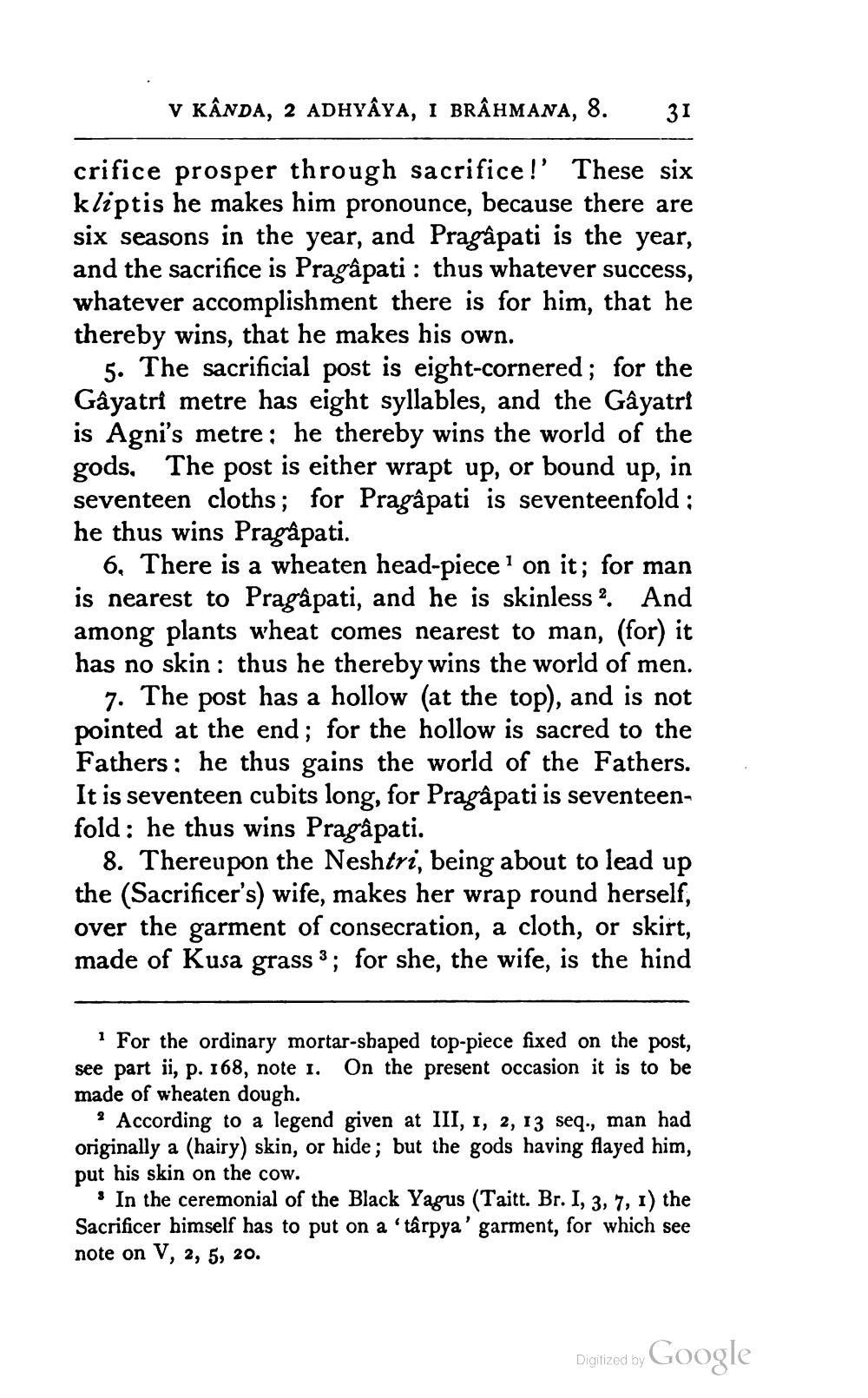________________
v KÂNDA, 2 ADHYÂYA, I BRÂHMANA, 8.
31
crifice prosper through sacrifice!' These six kliptis he makes him pronounce, because there are six seasons in the year, and Pragâpati is the year, and the sacrifice is Pragâpati : thus whatever success, whatever accomplishment there is for him, that he thereby wins, that he makes his own.
5. The sacrificial post is eight-cornered; for the Gâyatri metre has eight syllables, and the Gâyatri is Agni's metre: he thereby wins the world of the gods. The post is either wrapt up, or bound up, in seventeen cloths; for Pragâpati is seventeenfold : he thus wins Pragàpati.
6. There is a wheaten head-piece 1 on it; for man is nearest to Pragâpati, and he is skinless 2. And among plants wheat comes nearest to man, (for) it has no skin : thus he thereby wins the world of men.
7. The post has a hollow (at the top), and is not pointed at the end; for the hollow is sacred to the Fathers; he thus gains the world of the Fathers. It is seventeen cubits long, for Pragâpati is seventeenfold: he thus wins Pragâpati.
8. Thereupon the Neshtri, being about to lead up the (Sacrificer's) wife, makes her wrap round herself, over the garment of consecration, a cloth, or skirt, made of Kusa grass 3; for she, the wife, is the hind
* For the ordinary mortar-shaped top-piece fixed on the post, see part ii, p. 168, note 1. On the present occasion it is to be made of wheaten dough.
? According to a legend given at III, 1, 2, 13 seq., man had originally a (hairy) skin, or hide; but the gods having flayed him, put his skin on the cow.
* In the ceremonial of the Black Yagus (Taitt. Br. I, 3, 7, 1) the Sacrificer himself has to put on a 'târpya' garment, for which see note on V, 2, 5, 20.
Digitized by Google




